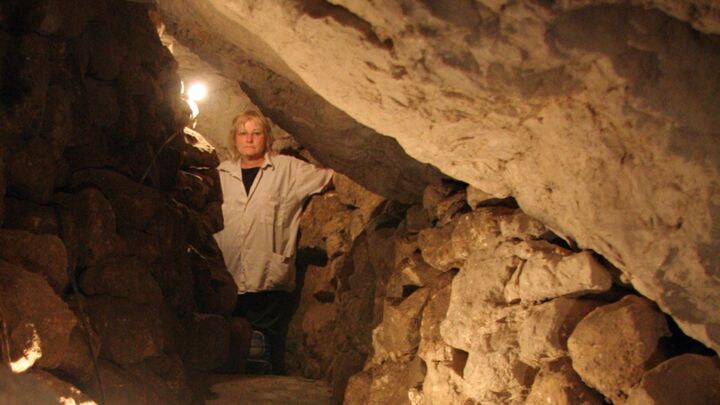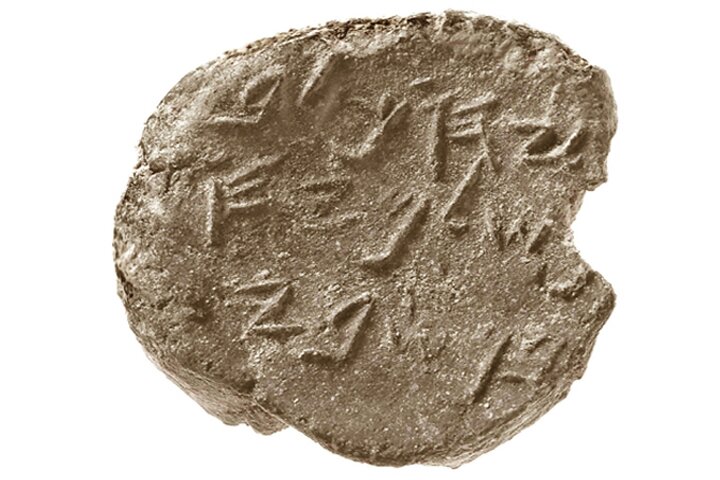
Let the Stones Speak
Jerusalem is built on the rubble of scores of versions of itself. Entombed beneath its present-day structures are the artifacts of settlements, conquests, wars and empires.
The ruins of its most glorious past are those of ancient Israel—particularly from the time of King David, the impressive Jewish poet-warrior who led the nation at its peak.
It was these ruins that began to surface at the hands of a team of archaeologists working under Dr. Eilat Mazar in 2005. Their splendor confirmed the authenticity of—and demanded renewed respect for—the biblical account of the history of Israel and Judah.
To doubters and detractors, Dr. Mazar offers a most articulate rebuttal: “Let the stones speak for themselves.” Oh, how they are speaking!
Many Jews are hearing these stones’ potent message about history. That message is strengthening their commitment to fight for the homeland of their ancestors. As Prof. Uzi Arad said at a conference in January, Dr. Mazar’s work “takes us to the very root of our civilization in history.”
How true. And yet—that is only half the truth. For those same stones are also delivering an even stronger sermon about the future of our civilization—both of the Jewish state and of all mankind!
Within the area of Jerusalem today called “the City of David”—the seat of David’s rule anciently—Dr. Mazar found a massive structure with walls up to 16 feet thick. It was the fortified palace of a monarch governing a mighty empire.
The grandeur of David’s palace represents a time when Israel was strong, unified, wealthy, and incredibly blessed under righteous rulership. Combined with the scriptural account, it is tangible proof of the blessings God gives those who obey Him (e.g. 2 Samuel 5:10).
That beautiful history points to the future. Scripture contains prophecies that God is going to resurrect King David, who will unify Israel once again (e.g. Jeremiah 30:9; Ezekiel 37:24; Hosea 3:5).
Even more remarkably, the royal lineage that God began through David will culminate in the Messiah, at His return, assuming David’s very throne! (Isaiah 9:6-7). The New Testament counterpart, yet to be fulfilled, is Luke 1:32-33, which reads, “He shall be great, and shall be called the Son of the Highest: and the Lord God shall give unto him the throne of his father David: And he shall reign over the house of Jacob for ever; and of his kingdom there shall be no end.”
Prophecies about God’s future Kingdom show that the government will stand in the same location as it did during David’s reign. In the tradition of “his father David,” the Messiah is going to rule from the Holy City, Jerusalem—not just Israel and Judah, but the entire world.
The now-exposed walls of the royal palace that housed that throne anciently give an inspiring prophetic sermon about the imminent restoration of righteous kingship to that same location!

In the area around David’s palace, Dr. Mazar’s team has found several clay seals, called bullae, such as would be used to stamp an official document. One belonged to Jehucal, a man mentioned in Jeremiah 37:3. Jehucal is also mentioned in Jeremiah 38:1, as is Gedaliah, the owner of another seal Dr. Mazar uncovered.
These two men were officials in the court of Zedekiah, who sat on David’s throne as king of Judah during the time of the Prophet Jeremiah. Their claim to fame? That they threw Jeremiah in prison—and tried unsuccessfully to have him killed.
Jehucal and Gedaliah hated this great prophet of God for one simple reason: the sternness of his message: “Thus saith the Lord,” Jeremiah proclaimed. “He that remaineth in this city shall die by the sword, by the famine, and by the pestilence …. This city shall surely be given into the hand of the king of Babylon’s army, which shall take it” (Jeremiah 38:2-3). Jeremiah bravely told the leaders and people of Judah that they were about to suffer captivity as punishment for their disobedience to God. It was a terrifying warning from God. But rather than heeding it, the people tried to silence it.
Thus, the Jews were in fact taken captive. Nebuchadnezzar, king of Babylon, razed the temple and the whole of Jerusalem. He seized Zedekiah, put out his eyes, and—seeking to end David’s royal line—killed his sons (2 Kings 25:1-10).
These two bullae—uncovered today after 2½ millennia—speak of the shameful abuse Jeremiah suffered at the hands of the people he was trying to save! They painfully remind us of just how hard-headed our human nature can be. They cry out that we must listen and heed when God tries to warn us in order to avert disaster!
Is Judah listening today? The modern Jewish state is caught in a maelstrom of signs of impending disaster. Yet it is following the tragic path of Jehucal and Gedaliah.
We must realize, though, that Jeremiah didn’t warn Judah alone, but all Israel—the descendants of which are the United States and Britain. There is a modern Babylon rising today. The Bible warns that this empire-in-the-making is about to take modern Israel into captivity! (Read The United States and Britain in Prophecy for proof.)
Truly, these two clay seals ring out a clarion warning to us today.
After their brutal captivity had humbled them, God gave the Jews the opportunity to return to Jerusalem in the sixth century b.c. to rebuild the temple. Because they faced so many enemies, Nehemiah built a protective wall around the city. He rallied the Jewish workmen and worked at breakneck speed, famously finishing the wall in 52 days.
The remnant of that wall is another major artifact Dr. Mazar’s team has uncovered in the City of David.
That wall delivers a message of tremendous hope. Yes, God’s corrective hand was on the Jews, but He applied it in measure to bring them back into communion with Him. Once they learned their lesson, they renewed their relationship with their Creator and returned again to reestablish true worship. The wall around the second temple environs represented a redeemed people’s determination to protect and preserve that communion with God.
The Bible is full of prophecy showing that, while, tragically, the Jews and Israelite nations today are about to follow the path of their forebears into captivity, so too will God, once this grievous punishment serves its purpose, restore them to the Promised Land. One of the richest accounts is in Jeremiah, beginning in verse 36 of chapter 32 and continuing through the entirety of chapter 33.
The stones of the City of David excavation supply valuable testimony of a past both grievous and glorious. But their most relevant and eloquent message concerns events about to unfold: a horrifying captivity, a humbling—a redemption, a glorious restoration—and a kingship that fulfills an ancient promise and lasts forever.
As these stones speak, may the Jews and the world heed.
